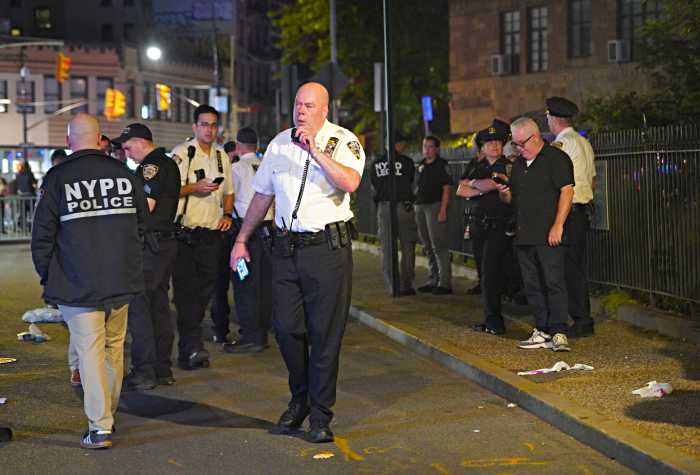Information Technology High School in Long Island City got a clean bill of health in a recent round of tests, school officials said.
As posted on the school’s website, two rounds of air-quality tests were performed last month by ATA Associates at the request of the city’s Department of Education (DOE).
In a summary addressed to the DOE, Wagdi Abdelshalid of ATA Associates, wrote that results for trichloroethylene, tetrachloroethylene, and methylene chloride were below guidelines set by the New York State Department of Health. In addition, other chemicals did not exceed the American Industrial Hygiene Foundation’s guidelines.
DOE spokesperson Margie Feinberg said that the test was part of a three-round process to examine the school’s safety.
“The school is safe, and everything seems to be in order,” Feinberg said. “There is one final test to be performed when the school community wants to accommodate it.”
The final test involves testing the air quality in and around the school when all filtering systems are turned off. Therefore, the test needs to be performed when school is not in session - possibly over a long weekend or holiday, Feinberg said.
Local politicians and parents still urged school officials to continue to monitor the school, located at 21-16 44th Road, after air-filtration systems reportedly malfunctioned repeatedly in September.
“While I am relieved that testing results do not appear to show harmful levels of contamination, parents should never be put in a situation where they have to worry the way these parents have worried over the past two weeks,” said Councilmember Eric Gioia. “That means we need to have two things going forward - continued testing and improved communication with a set mechanism to inform parents. Both must be done in a methodical, transparent, and consistent manner.”
At a meeting held in Long Island City on Monday, October 15, Assemblymember Cathy Nolan said that she had sponsored a state bill to force the DOE to submit plans for possible school sites to legislators and community members. The bill passed in the Assembly unanimously and now awaits review in the State Senate.
“The city needs to wake up, smell the toxins and stop opposing efforts for more oversight,” said Dave Palmer, a lawyer for the New York Lawyers for the Public Interest, who held to organize the meeting with parents.
“Most people know their own neighborhoods and would have knowledge of how vacant buildings were used in the past. Public disclosure, the opportunity for the City Council to vote, and the use of the state’s standard environmental review process would provide a necessary safeguard,” Nolan said.
In addition, an independent environmental consultant questioned whether there would be any health consequences stemming from long-term exposure to the site, formerly a metal-plating warehouse.
“If I had been asked, I probably would have recommended against putting a school on this site,” said Lenny Siegel, the Executive Director of the Center for Public Environmental Oversight.
“The release of the re-assuring indoor air sampling results this month is cause for relief, but it should not be seen as the end of a process. Instead, it must be viewed as the beginning of a continuing effort to involve the Info Tech community in the development of a strategy for both long-term protection of the building’s occupants and long-term remediation of the site,” Siegel and co-author Peter Strauss wrote in a report about the site.































